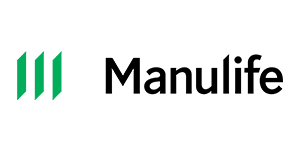Updated: June 15, 2022
It’s no secret that prescription glasses in Canada can be costly, and unfortunately, excluding a few plans that offer limited coverage for minors, provincial plans aren’t any help. The cost of prescription lenses also varies widely by lens type, provider, and location. In some cases, prices can exceed $1,000 per pair!
Some insurance plans offer vision coverage, which can cover some eyecare-related expenses. However, many people still find themselves paying for at least a portion of the cost of their new glasses with personal funds or relying on supplemental coverage options.
Let’s take a closer at the cost of prescription glasses in Canada and common funding options to pay for them.
At the time this article was updated on June, 2022, all prices and statistics remained the same as the figures originally published in 2021
Table of Contents
The Average Cost of Prescription Lenses in Canada
You can expect to pay between $240 to $1,000 for prescription glasses, but it’s not unusual for the final price to exceed that. Premium eyeglass lenses alone can come with price tags as high as $700 to $1,000, whereas simple metal alloy frames can run as low as $8.
The cost of eyeglasses also increases based on the quality of the frame and lenses. Simple, custom-made, single-vision lenses and frames can be as low as $150 to $200. Name brand glasses can go as high as $600, and $1,000 is the average price for glasses with a designer label, like Calvin Klein.
It’s possible to find non-prescription glasses for $10 or $20 at local stores. They offer minimal correction with no custom fitting. They are suited for people who need minor assistance with reading, but they are not sufficient long-term corrective lenses.
Additional Costs and Contributing Factors
The cost of prescription lenses in Canada goes up even more when moving from single-vision lenses to progressive lenses or invisible bifocals. Progressive lenses have a seamless shift between corrective strengths to adjust for various distances. The lenses’ surfaces have to be custom-shaped to match the needs of the wearer.
The price difference between a single-vision lens and a progressive lens is not only due to the distinctive shape of their surfaces. The latter is a premium option that brings your vision as close to perfect as possible without corrective laser surgery. However, the price of both lens styles reflects the result of years of research, labour, and manufacturing.
Adding features to prescription lenses will also boost the price. An anti-scratch coating and UV protection to filter harmful ultraviolet light from the sun are generally inexpensive as standalone features. However, anti-reflective coatings or polarized lenses to reduce glare from computer screens and windshields can range from $100 to $225.
High-index plastics for creating thinner, lighter lenses can add $100 or more to the final price, too. Other lenses and treatments that affect the cost include:
- Tints in grey, blue, amber, and more
- Photochromic lenses that darken in sunlight
- Wavefront technology to sharpen vision
Average Cost of Prescription Sunglasses
It’s also possible to purchase prescription sunglasses in Canada. They benefit people who spend a lot of time outdoors and need protection from the sun. They may also reduce the progression of certain eye diseases like cataracts.
Prescription sunglasses average from $50 to $600 or more. The cost depends primarily on the prescription strength, brand name, and purchase location. Cheaper glasses are available from online retailers, while brick-and-mortar stores tend to more costly.
Regardless of where you buy your glasses, an eye exam is usually necessary, which depending on your insurance carrier or lack thereof, can add to your overall costs.
Why Are Prescription Glasses and Lenses So Expensive?
About 57% of Canadians age 20 and older have vision problems that require some form of optical correction. By age 50, the number jumps to 80%. Suffice to say, glasses are prevalent in Canada, but it isn’t demand that’s driven the price up.
Despite the various features and add-ons that influence the cost of prescription lenses in Canada, the overall industry plays a more significant role in the price of prescription eyewear.
EssiloLuxottica is a billion-dollar company that holds a monopoly on the entire eyeglass industry. Many of the retailers in Canada are under the company’s umbrella. EssiloLuxottica owns and licenses popular eyewear brands like Pearle Vision, Sunglasses Hut, and Prada.
The company has virtually no competition, so its leaders can set prices for frames and lenses as they see fit. Smaller companies like Ollie Quinn and Warby Parker offer lower prices, but they’re not as common as the eyewear giant.
Introduction to Group Health Insurance
Shopping for Group Benefits? Begin your journey of being well informed here.
How to Cover the Costs of Prescription Lenses in Canada
Provincial healthcare plans generally offer some form of vision care, but no government insurance covers the cost of prescription lenses or contact lenses in Canada for adults. Instead, the coverage takes care of emergency eye-related traumas, common eye injuries, and eye diseases like cataracts, glaucoma, and diabetic retinopathy.
Some regional health insurance plans offer exceptions through provincial low-income assistance or disability assistance. Those programs may partially cover the costs of prescription glasses for eligible residents.
Even so, most people pay for their glasses out-of-pocket or file a claim with their private insurance. Employer-based insurance through group benefit plans may also cover the expense.
For instance, a Health Care Spending Account (HCSA) is a form of supplemental insurance that covers expenses private and provincial health plans don’t cover. You can use your account to cover prescription glasses, contact lenses, and corrective eye surgeries.
An HCSA is an account containing a set amount that can be used for healthcare needs. The benefit provides tax-free money for healthcare services and is a tax-deductible business expense.
If you own an incorporated business, you can open an HCSA for yourself, even if you’re the only person working for your company. Those who are self-employed and independent contractors may also qualify under certain circumstances.
Where to Buy a Prescription Frame and Lenses
Once upon a time, the optometrist office was the only place you could buy lenses, but these days you have other options, such as:
- Vision Centers: With an eye exam from a qualified eye doctor, you can shop for new glasses in brick-and-mortar vision centers. They have a wide variety of lenses and frame styles at various price points.
- Chain Stores: Big box stores sometimes have separate optical centers that accept lens prescriptions and sell frames.
- Online: Some of the most economical lenses and frames are available online from digital retailers. However, you will still need a prescription.
Lower the Cost of Prescription Lenses Through Extended Benefits
Whether you’re considering offering extended benefits to ensure your employees have options to cover the cost of getting glasses or want to open an HCSA for yourself, we’re here to help.
At Group Enroll, we’ve helped countless business owners and independent contractors find affordable insurance plans that fit their needs and budgets. Our team can help you find the best quotes from insurance agencies throughout Canada.
Just fill out our quick quote form to get started. You can also contact us by email at [email protected] or by post at 10 Great Gulf Dr, Unit 5, Vaughan, ON, L4K 0K7.








